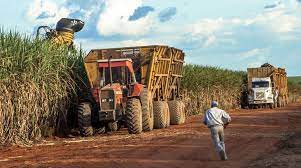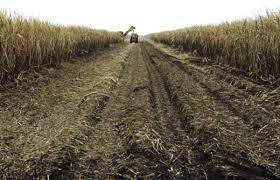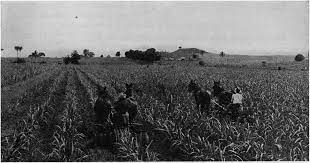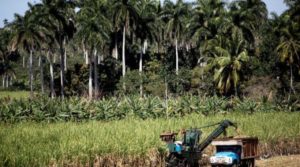CATASTROPHE IN THE CUBAN SUGAR INDUSTRY. WILL HAVE TO IMPORT FOR THE DOMESTIC MARKET.
Cuba closes the worst harvest in more than a century and will have to import sugar for the domestic market.
The industry produced just 816,000 tons of sugar, 68% of what was expected and almost ten times less than in the 70s.
Catastrophe in the Cuban sugar industry. The provisional results of this year’s harvest are worse than expected and production is hitting the ground. With just 816,000 tons of sugar, 68% of the 1.2 million planned, the Island obtains the worst figure since 1908.
The state monopoly Azcuba has also confirmed in a note released by Prensa Latina that at the end of April only 71% of the planned sugarcane had been ground.
According to these data, Cuba would only have 416,000 tons of sugar available for national consumption, since it is committed to the annual sale of 400,000 tons with China. The Island consumes annually between 600,000 and 700,000 tons of the product.
The reasons have very precise data: 57% are attributed to lack of fuel, 25% to the breakdown of machinery and transport and 7% to industrial ones. The rest is attributed to humidity in the fields, 9%, and covid-19, 2%.
All these numbers have, according to the state company and the official press, a person in charge: the US The note, entitled Sugar harvest in Cuba receives negative impacts from the US blockade on Radio Cadena Agramonte, in Camagüey, maintains that the economic crisis- The country’s financial and energy sector has been accentuated by “the intensification of the blockade.”
Cuba would only have 416,000 tons of sugar available for national consumption since it has committed to China the annual sale of 400,000 tons.
Another negative data is that of the industrial performance, which should be 9.53% and reaches 8.62%. The authorities attribute this to the low maturity of the raw material. But milling has also contributed. Azcuba planned to grind with 38 plants, but 12 of them delayed the start, seven due to the humidity of the fields, and five due to the delay in the arrival of resources.
The harvest in Cuba runs from November to May, so April 30 is considered the closing date. However, Juan Carlos Santos, vice president of the state company, said that the work will continue if the rains in May are delayed.
The worst data since the 1959 Revolution was that of the 2009-2010 harvest when 1.1 million tons were reached, which forced the importation of sugar made with beets in France.
Of the 156 plants that were operating before 1959, only 56 remain. In that year, 5.6 million tons of sugar were produced, which increased in the 1970s and 1980s to seven and eight million.
CATÁSTROFE EN LA INDUSTRIA AZUCARERA CUBANA. DEBERA IMPORTAR AZUCAR
Cuba cierra la peor zafra en más de un siglo y deberá importar azucar para el mercado interno.
La industria produjo apenas 816.000 toneladas de azúcar, el 68% de lo previsto y casi diez veces menos que en los años 70.
Catástrofe en la industria azucarera cubana. Los resultados provisionales de la zafra de este año son peores de lo esperado y la producción toca suelo. Con apenas 816.000 toneladas de azúcar, el 68% de las 1,2 millones previstas, la Isla obtiene el peor dato desde 1908.
El monopolio estatal Azcuba ha confirmado, además, en una nota difundida por Prensa Latina que a finales de abril solo se había molido el 71% de la caña planificada.
Según estos datos, Cuba solo tendría disponibles 416.000 toneladas de azúcar para consumo nacional, ya que tiene comprometida con China la venta anual de 400.000 toneladas. La Isla consume anualmente entre 600.000 y 700.000 toneladas del producto.
Las razones tienen datos muy precisos: el 57% se atribuyen a la falta de combustible, el 25% a roturas de la maquinaria y el transporte y un 7% a las industriales. El resto se atribuye a la humedad de los campos, un 9%, y el covid-19, un 2%.
Todos estos números tienen, según la empresa estatal y la prensa oficial, un responsable: EE UU. La nota, titulada Zafra azucarera en Cuba recibe impactos negativos del bloqueo de Estados Unidos en el medio camagüeyano Radio Cadena Agramonte, sostiene que la crisis económico-financiera y energética del país ha sido acentuada por “la intensificación del bloqueo”.
Cuba solo tendría disponibles 416.000 toneladas de azúcar para consumo nacional, ya que tiene comprometida con China la venta anual de 400.000 toneladas.
Otro dato negativo es el del rendimiento industrial, que debía ser de un 9,53% y llega al 8,62%. Las autoridades lo atribuyen a la baja maduración de la materia prima. Pero también la molienda ha contribuido. Azcuba planificó moler con 38 centrales, pero 12 de ellos retrasaron el inicio, siete por la humedad de los campos y cinco por el atraso en la llegada de los recursos.
La zafra en Cuba va de noviembre a mayo, por lo que el 30 de abril se considera la fecha de cierre. Sin embargo, Juan Carlos Santos, vicepresidente de la empresa estatal, dijo que las labores seguirán si las lluvias en mayo se atrasan.
El peor dato desde la Revolución de 1959 fue el de la zafra 2009-2010, cuando se alcanzaron 1,1 millones de toneladas, lo que obligó a importar azúcar hecha con remolacha en Francia.
De los 156 centrales que tenía operativos antes de 1959 apenas quedan 56. En aquel año se produjeron 5,6 millones de toneladas de azúcar, que aumentaron en las décadas de los 70 y 80 hasta los siete y ocho millones.
Agencies/ 14ymedio/ Internet Photos/ Arnoldo Varona/ PHOTOS – VIDEOS “LA HISTORIA DE CUBA”
THE CUBAN HISTORY, HOLLYWOOD.



 CATASTROPHE in the Cuban Sugar Industry. Will Have to Import for the Domestic Market. * CATÁSTROFE en la Industria Azucarera Cubana. Deberá Importar Azucar para el Mercado Domestico. PHOTOS.
CATASTROPHE in the Cuban Sugar Industry. Will Have to Import for the Domestic Market. * CATÁSTROFE en la Industria Azucarera Cubana. Deberá Importar Azucar para el Mercado Domestico. PHOTOS.





